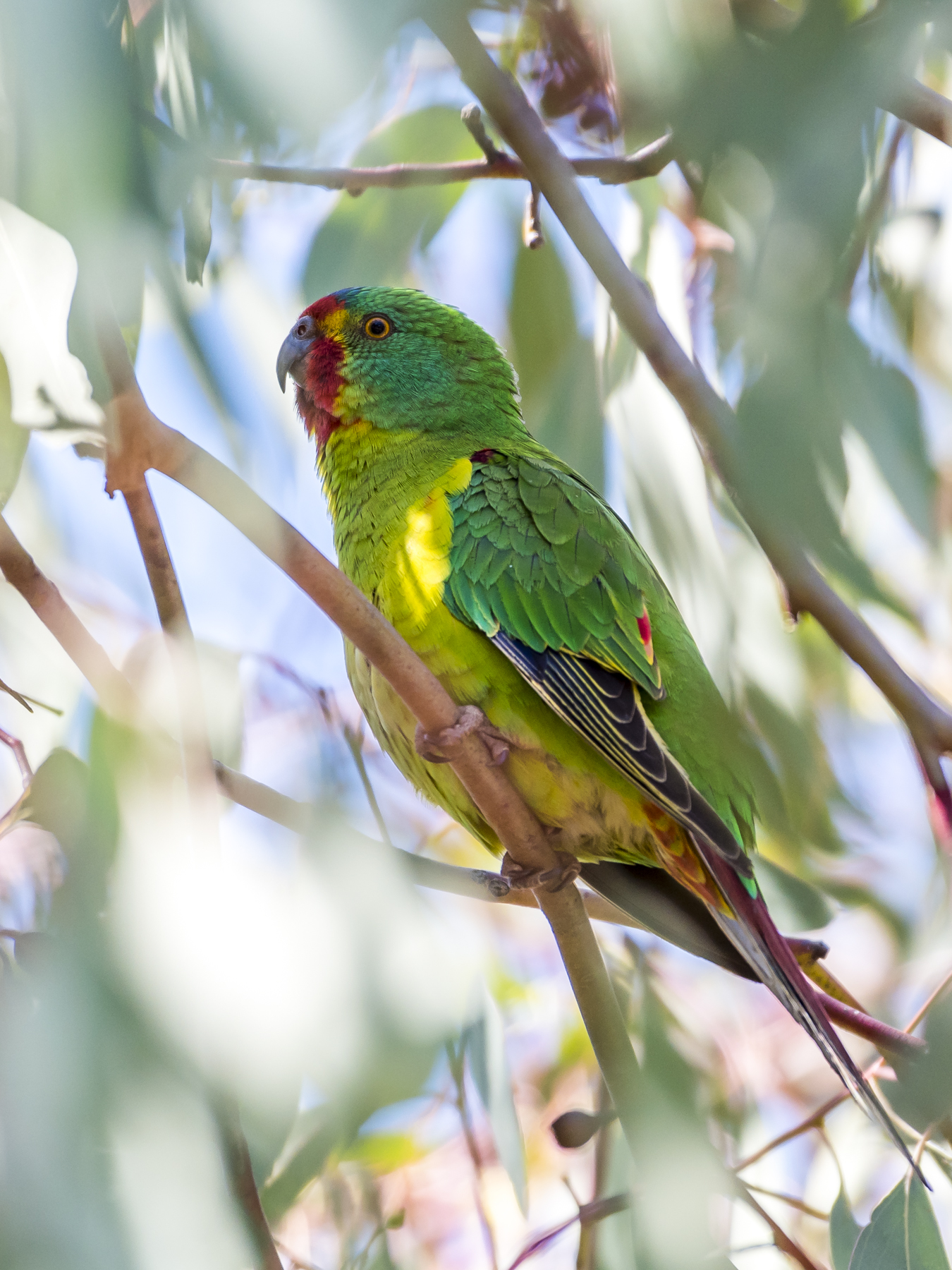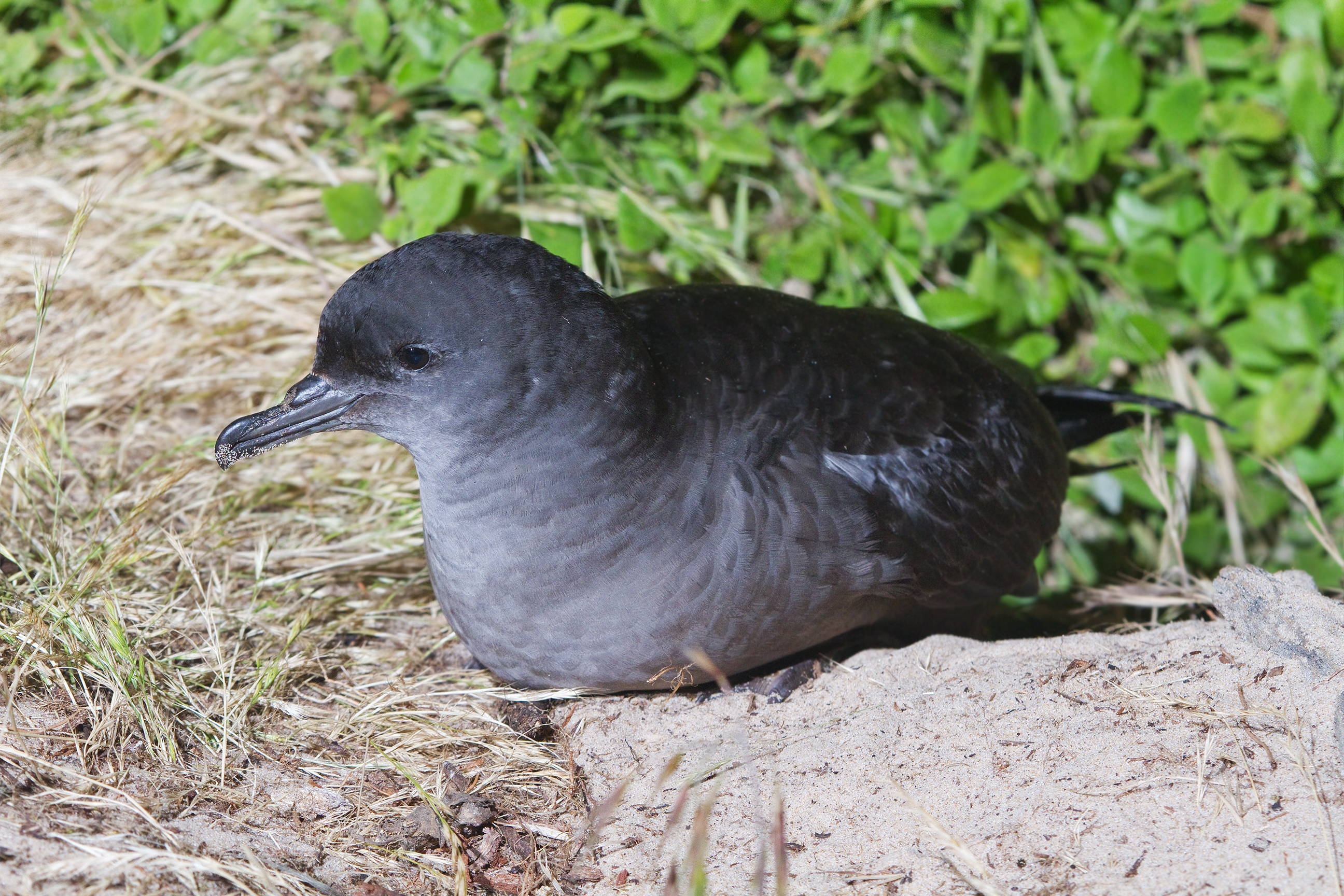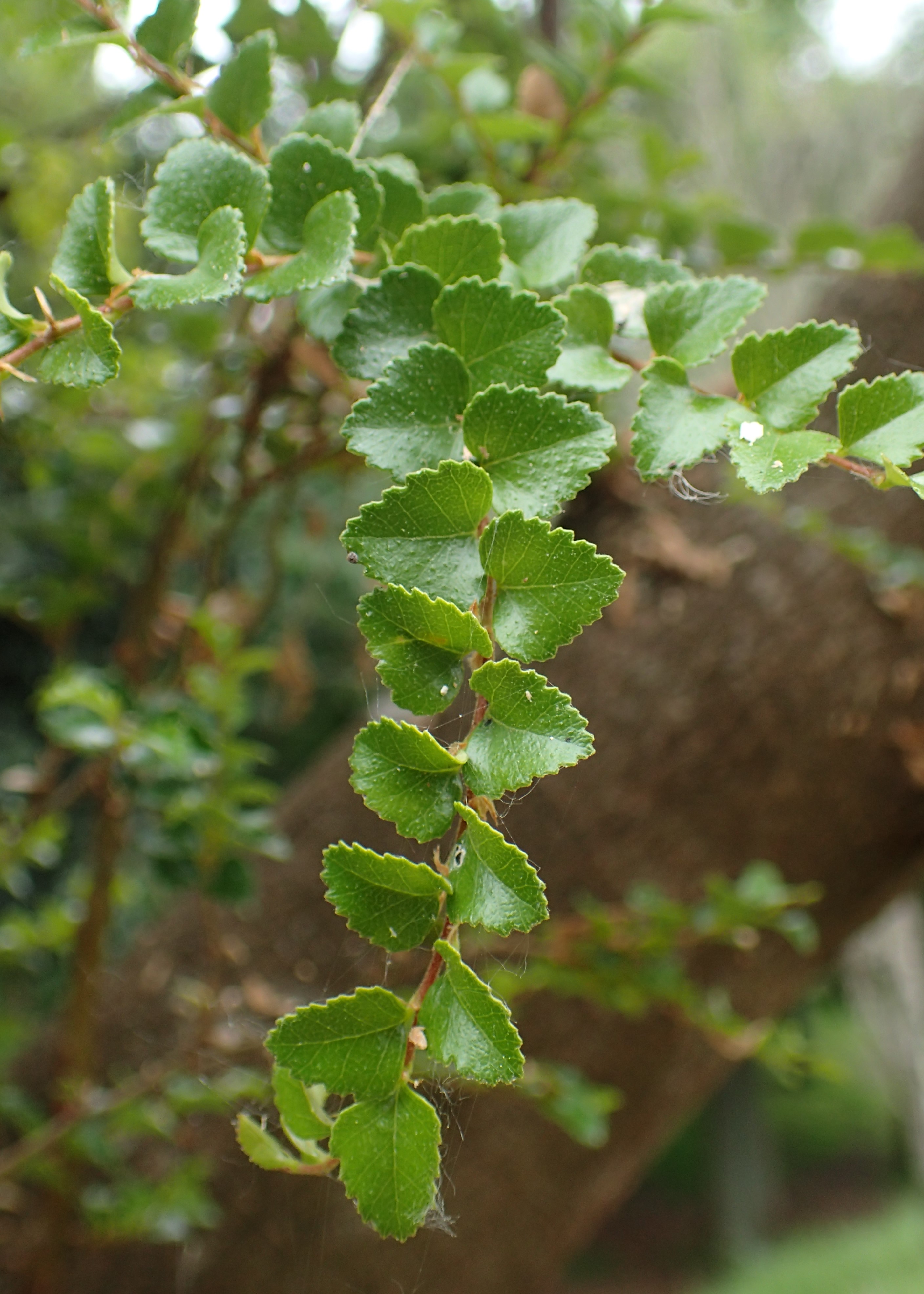|
De Witt Island
De Witt Island, also known as Big Witch, is an island located close to the south-western coast of Tasmania, Australia. The island is the largest of the Maatsuyker Islands Group, and comprises part of the Southwest National Park and the Tasmanian Wilderness World Heritage Site. The island is listed on the Australian Register of the National Estate. Location and features De Witt Island lies some south of Louisa Bay, on Tasmania's south coast. Abel Tasman discovered it in 1642 and named it Witsen or Wits Eijlanden. The island is broadly triangular in shape, some across, with cliffs ranging from high to the south on all sides except a part of the central north coast. The highest parts of the island are located very close to the south coast, and enclose a north-facing basin. The island's summit is located very close to its southernmost point. Although currently uninhabited, it has a long history of human usage, including logging and occasional habitation.Brothers, Nigel; Pembe ... [...More Info...] [...Related Items...] OR: [Wikipedia] [Google] [Baidu] |
South West Tasmania
South West Tasmania is a region in Tasmania that has evoked curiosity and wonder during the period of European presence on the island. Initially relatively unexplored by Europeans, in the mid-twentieth century the area was considered for its potential resources for development. Much of the area is now protected within the Southwest National Park and as part of the Tasmanian Wilderness World Heritage Area. The most notable controversy occurring in the region was the flooding of Lake Pedder as part of a hydro-electric development, in 1972. This was followed, further north, by the proposed damming of the Franklin River in the early 1980s, which did not proceed. Southwest is a locality that covers most of the region. The locality (and therefore the region) is in the local government areas of Derwent Valley (29%), Huon Valley (20%), Central Highlands (7%) and West Coast (44%). Its central point, near the encircled locality of Strathgordon, is about west of the town of ... [...More Info...] [...Related Items...] OR: [Wikipedia] [Google] [Baidu] |
Forest
A forest is an ecosystem characterized by a dense ecological community, community of trees. Hundreds of definitions of forest are used throughout the world, incorporating factors such as tree density, tree height, land use, legal standing, and ecological function. The United Nations' Food and Agriculture Organization (FAO) defines a forest as, "Land spanning more than 0.5 hectares with trees higher than 5 meters and a Canopy (biology), canopy cover of more than 10 percent, or trees able to reach these thresholds ''in situ''. It does not include land that is predominantly under agricultural or urban use." Using this definition, ''Global Forest Resources Assessment (FRA), Global Forest Resources Assessment 2020'' found that forests covered , or approximately 31 percent of the world's land area in 2020. Forests are the largest Terrestrial ecosystem, terrestrial ecosystems of Earth by area, and are found around the globe. 45 percent of forest land is in the Tropical forest, trop ... [...More Info...] [...Related Items...] OR: [Wikipedia] [Google] [Baidu] |
Swift Parrot
The swift parrot (''Lathamus discolor''), also known by the palawa kani name swift waylitja, is a species of broad-tailed parrot, found only in southeastern Australia. The species breeds in Tasmania during the summer and migrates north to southeastern mainland Australia from Griffith, New South Wales, Griffith-Warialda, New South Wales, Warialda in New South Wales and west to Adelaide in the winter. It is a nomadic migrant, and it settles in an area only when there is food available. The Swift Parrot was voted 2023 Bird of the Year in ''Guardian Australia, The Guardian Australia'' and BirdLife Australia's biennial poll. The species is critically endangered, and the severe predation by introduced sugar gliders (''Petaurus breviceps'') on breeding females and nests in some locations has demonstrated an unexpected but potentially serious new threat. Genetic evidence for the effective population size suggests that the minimum potential population size is now around 300–500 indivi ... [...More Info...] [...Related Items...] OR: [Wikipedia] [Google] [Baidu] |
Sooty Oystercatcher
The sooty oystercatcher (''Haematopus fuliginosus'') is a species of oystercatcher. It is a wading bird endemic to Australia and commonly found on its coastline. It prefers rocky coastlines, but will occasionally live in estuaries. All of its feathers are black. It has a red eye, eye ring and bill, and pink legs. Taxonomy John Gould described the sooty oystercatcher in 1845. Its species name is the Latin Latin ( or ) is a classical language belonging to the Italic languages, Italic branch of the Indo-European languages. Latin was originally spoken by the Latins (Italic tribe), Latins in Latium (now known as Lazio), the lower Tiber area aroun ... adjective ''fuliginosus'', "sooty". Two subspecies are recognised, the nominate from the coastline of southern Australia and subspecies ''ophthalmicus'' from northern Australia. The southern subspecies is larger and heavier than the northern. The northern one, with a more yellowish eye ring, is found from the Kimberleys across the ... [...More Info...] [...Related Items...] OR: [Wikipedia] [Google] [Baidu] |
Silver Gull
The silver gull (''Chroicocephalus novaehollandiae'') is a gull in Oceania. It is the most common gull of Australia. It has been found throughout the continent, but particularly at or near coastal areas. It is smaller than the Pacific gull (''Larus pacificus''), which also lives in Australia. The silver gull should not be confused with the herring gull, which is called "silver gull" in many other languages (scientific name ''Larus argentatus'', German , French , Dutch ), but is a much larger, robust gull with no overlap in range. Taxonomy It has traditionally been placed in the genus ''Larus'', as is the case with many gulls, but is now placed in the genus ''Chroicocephalus''. Hartlaub's gull (''C. hartlaubii'') of South Africa was formerly sometimes considered to be subspecies of the silver gull. There are three subspecies: * ''C. n. forsteri'' ( Mathews, 1912) – north and northeast Australia, New Caledonia, Loyalty Islands * ''C. n. novaehollandiae'' ( Stephens, ... [...More Info...] [...Related Items...] OR: [Wikipedia] [Google] [Baidu] |
Fairy Prion
The fairy prion (''Pachyptila turtur'') is a small seabird with the standard prion plumage of blue-grey upperparts with a prominent dark "M" marking and white underneath. The sexes are alike. It is a small prion which frequents the low subantarctic and subtropic seas. Taxonomy The fairy prion was formally described in 1820 by the German naturalist Heinrich Kuhl under the binomial name ''Procellaria turtur''. It is now placed with the other prions in the genus ''Pachyptila'', introduced in 1811 by Johann Karl Wilhelm Illiger. The genus name combines the Ancient Greek ''pakhus '', meaning "dense" or "thick", with ''ptilon'', meaning "feather" or "plumage". The specific epithet ''turtur'' is Latin for " turtle dove". The word comes from the Ancient Greek word , meaning "a saw", which refers to the serrated edges of its bill. The fairy prion is a member of the genus ''Pachyptila'' and of the subgenus ''Pseudoprion'' Coues, 1866. Along with the blue petrel, they make up the prions. ... [...More Info...] [...Related Items...] OR: [Wikipedia] [Google] [Baidu] |
Short-tailed Shearwater
The short-tailed shearwater or slender-billed shearwater (''Ardenna tenuirostris''; formerly ''Puffinus tenuirostris''), also called yolla or moonbird, and commonly known as the muttonbird in Australia, is the most abundant seabird species in Australian waters, and is one of the few Australian native birds in which the chicks are muttonbirding, commercially harvested. It is a migratory species that breeds mainly on small islands in Bass Strait and Tasmania and migrates to the Northern Hemisphere for the boreal summer. Taxonomy This shearwater appears to be related to the sooty shearwater, sooty and great shearwaters, which are also blunt-tailed, black-billed species, but its precise relationships are obscure (Austin, 1996; Austin ''et al.'', 2004). These are among the larger species of shearwater, which have been moved to a separate genus, ''Ardenna'' based on a phylogenetic analysis of mitochondrial DNA (Penhallurick & Wink, 2004). Ecology Each parent feeds the single chick fo ... [...More Info...] [...Related Items...] OR: [Wikipedia] [Google] [Baidu] |
Little Penguin
The little penguin (''Eudyptula minor'') is the smallest species of penguin. It originates from New Zealand. It is commonly known as the fairy penguin, little blue penguin, or blue penguin, owing to its slate-blue plumage and is also known by its Māori language, Māori name . It is a Neritic zone, marine neritic species that dives for food throughout the day and returns to burrows on the shore at dusk, making it the only Nocturnality, nocturnal penguin species on land. The Eudyptula novaehollandiae, Australian little penguin (''Eudyptula novaehollandiae''), from Australia and the Otago region of New Zealand, is considered a separate species. ''Eudyptula minor'' feathers are dense in Melanosome, melanosomes, which increase water resistance and give them their unique blue colour. Taxonomy The little penguin was first described by German naturalist Johann Reinhold Forster in 1781. Several subspecies are known, but a precise classification of these is still a matter of dispute. ... [...More Info...] [...Related Items...] OR: [Wikipedia] [Google] [Baidu] |
Wader
245px, A flock of Red_knot.html" ;"title="Dunlins and Red knot">Dunlins and Red knots Waders or shorebirds are birds of the order Charadriiformes commonly found wikt:wade#Etymology 1, wading along shorelines and mudflats in order to foraging, forage for food crawling or burrowing in the mud and sand, usually small arthropods such as aquatic insects or crustaceans. The term "wader" is used in Europe, while "shorebird" is used in North America, where "wader" may be used instead to refer to long-legged wading birds such as storks and herons. There are about 210 species of wader, most of which live in wetland or coastal environments. Many species of Arctic and temperate regions are strongly migratory, but tropical birds are often resident, or move only in response to rainfall patterns. Some of the Arctic species, such as the little stint, are amongst the longest distance migrants, spending the non- breeding season in the southern hemisphere. Many of the smaller species found ... [...More Info...] [...Related Items...] OR: [Wikipedia] [Google] [Baidu] |
Seabird
Seabirds (also known as marine birds) are birds that are adaptation, adapted to life within the marine ecosystem, marine environment. While seabirds vary greatly in lifestyle, behaviour and physiology, they often exhibit striking convergent evolution, as the same environmental problems and feeding ecological niche, niches have resulted in similar adaptations. The first seabirds evolved in the Cretaceous geological period, period, while modern seabird families emerged in the Paleogene. Seabirds generally live longer, Reproduction, breed later and have fewer young than other birds, but they invest a great deal of time in their young. Most species nest in Bird colony, colonies, varying in size from a few dozen birds to millions. Many species are famous for undertaking long annual bird migration, migrations, crossing the equator or circumnavigating the Earth in some cases. They feed both at the ocean's surface and below it, and even on each other. Seabirds can be highly pelagic, ... [...More Info...] [...Related Items...] OR: [Wikipedia] [Google] [Baidu] |
Nothofagus Cunninghamii
''Nothofagus cunninghamii'', commonly known as myrtle beech or Tasmanian myrtle, is the dominant species of cool temperate rainforests in Tasmania and Southern Victoria. It has low fire resistance and grows best in partial shade conditions. It has rough bark covered in mosses and epiphytic growth. Its leaves are triangular-shaped, small, and dark green with differentiated margins. It has white unisexual flowers. Description and habit ''N. cunninghamii'' range from trees of up to 50 meters in protected rainforest valleys to low-growing alpine shrubs less than 1 m tall in exposed conditions. Maximum height is about 55 m. The Leaf, leaves are simple and alternate, growing 0.5–1.5 cm long, and in Victoria up to 2 cm (0.8 in) long. The leaves are dark green, with new growth brilliant red, pink or orange in spring. They are triangular with irregular minute teeth with craspedodromous veins with all secondary veins terminate at leaf margins and spread from a central ... [...More Info...] [...Related Items...] OR: [Wikipedia] [Google] [Baidu] |
Eucryphia Lucida
''Eucryphia lucida'', the leatherwood, is a species of tree or large shrub endemic to forests of western Tasmania, Australia. An attractive plant used in both horticulture and apiculture, it was promoted by the Tasmanian Branch of the then SGAP as an alternative to the Tasmanian blue gum (''Eucalyptus globulus'') for Tasmania's floral emblem. It was described as ''E. billiarderi'' at one stage, this now being a synonym. Description Ranging from in height, it can sometimes grow to in favourable conditions. The small dark green glossy leaves are elliptical in shape and long. Appearing in spring and summer, the diameter white flowers have four petals and resemble small single roses and have a strong fragrance, especially on warmer days. The flower parts are often covered with a sticky sap. Flowering is followed by leathery capsules which mature in autumn. The species was first described by Jacques Labillardière. Distribution and habitat It is widespread and common in moiste ... [...More Info...] [...Related Items...] OR: [Wikipedia] [Google] [Baidu] |






